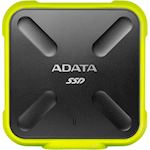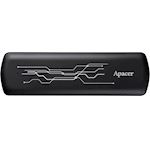SSD Series
Frequently asked questions
-
What is SSD?
A solid state drive (SSD) is a data storage device that uses solid-state memory to store persistent data. An SSD emulates a hard disk drive interface, thus easily replacing it in most applications. Recently, NAND based flash memory has become the standard for most SSD drive.
Most SSD manufacturers use non-volatile flash memory to create more rugged and compact devices for the consumer market. These flash memory-based SSD, also known as flash drives, do not require power. They are often packed in standard disk drive form factors (1.8, 2.5, and 3.5 inch). In addition, non-volatility allows flash SSD to retain memory even during sudden power outfall, and ensuring data persistence. SSD has no moving parts and short average seek times.
-
What is TRIM?
In computing, a TRIM command allows an operating system to inform a solid state drive (SSD) which data blocks, such as those belonging to a deleted file or affected by a format command, are no longer considered in use and can be wiped internally.
TRIM enables the SSD to handle garbage collection overhead, that would otherwise significantly slow down future write operations to the involved blocks. In the other hand, unlike with traditional hard disks, it would be advantageous to tell the SSD when you delete files so that the SSD could delete the pages at the time of the delete instead of performing the entire block erase procedure when you want to write data. This is where the TRIM function comes in.
Windows 7 and Windows Server 2008 R2 support the TRIM function, which OS use this function when they detect that a file is being deleted from an SSD. When the OS deletes a file on an SSD, it updates the file system but also tells the SSD via the TRIM command which pages should be deleted. At the time of the delete, the SSD can read the block into memory, erase the block, and write back only pages with data in them, as illustrated here. The delete is slower, but you get no performance degradation for writes because the pages are already empty, and write performance is generally what you care about.
TRIM only improves performance when you delete files. If you are overwriting an existing file, TRIM doesn't help and you'll get the same write performance degradation as without TRIM.
-
What is the difference between MLC and SLC?
SLC and MLC are both NAND-based non-volatile memory technologies. Multi-Level Cell (MLC) NAND and Single-Level Cell (SLC) NAND offer capabilities that serve two very different types of applications.
MLC NAND Flash allows each memory cell to store two bits of information, compared to the one bit-per-cell SLC NAND Flash. As a result, 90 nanometer (nm) MLC NAND offers a larger capacity (typically twice the density of SLC) and at a cost point appropriate for consumer products multi-function cell phones, digital cameras, USB drives and memory cards.
Though SLC NAND offers a lower density, it also provides an enhanced level of performance in the form of faster write speeds. Because SLC stores only one bit per cell, the likelihood for error is reduced. At 90 nanometer process, it is recommended to implement a 1 to 2-bit ECC for SLC, whereas 4-bit ECC is recommended on the MLC architecture. SLC also allows for longer write/erase cycle endurance and has a life expectancy rated at approximately 100,000 cycles, making it a better fit for use in applications requiring higher reliability, increased endurance and viability in multi-year product life cycles.
-
Is there any time limitation to the continuous use of the SSD?
Time between failures (MTBF) is estimated at 1,000,000 power-on hours.
-
What is ECC?
ECC (error correcting code) allows data that is being read or transmitted to be checked for errors. It differs from parity-checking in that errors are not only detected but also corrected. ECC is increasingly being designed into data storage and transmission hardware as data rates (and therefore error rates) increase.
Error-correcting codes are frequently used in lower-layer communication, as well as for reliable storage in media such as CDs, DVDs, HDDs, and RAM.
-
What is MTBF?
Mean time between failures (MTBF) is the predicted elapsed time between inherent failures of a system during operation. MTBF can be calculated as the arithmetic mean (average) time between failures of a system. The MTBF is typically part of a model that assumes the failed system is immediately repaired (zero elapsed time), as a part of a renewal process. This is in contrast to the mean time to failure (MTTF), which measures average time between failures with the modeling assumption that the failed system is not repaired.
TeqFind's Choice:
-
 ADATA SD700 1TB External SSD Yellow€ 122.92 excl. VAT
ADATA SD700 1TB External SSD Yellow€ 122.92 excl. VAT
€ 148.73 incl. VAT -
 Apacer AS722 USB 3.2 Gen 2 USB-C Portable SSD 1TB RP€ 147.03 excl. VAT
Apacer AS722 USB 3.2 Gen 2 USB-C Portable SSD 1TB RP€ 147.03 excl. VAT
€ 177.91 incl. VAT -
 New!Samsung Portable SSD T7 Touch 1TB Black€ 116.47 excl. VAT
New!Samsung Portable SSD T7 Touch 1TB Black€ 116.47 excl. VAT
€ 140.93 incl. VAT -
 Seagate FireCuda Gaming SSD, Black, 2TB€ 388.47 excl. VAT
Seagate FireCuda Gaming SSD, Black, 2TB€ 388.47 excl. VAT
€ 470.05 incl. VAT
